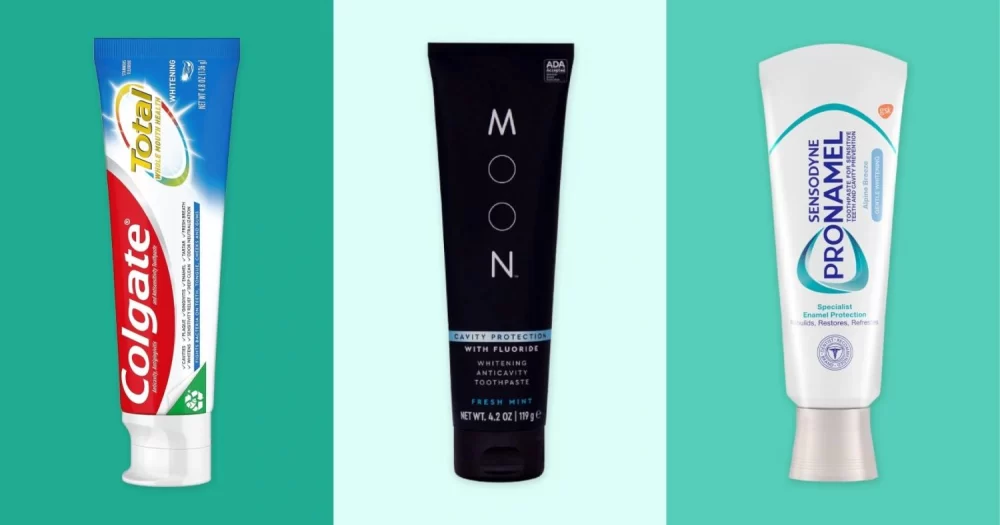
- Understanding Sensitive Teeth and Whitening Challenges
- Criteria for Choosing the Best Toothpaste for Whitening Sensitive Teeth
- Top Toothpaste Ingredients for Sensitive Teeth Whitening
- Real Experiences with Whitening Toothpaste for Sensitive Teeth
- Where to Find the Right Products for Sensitive Teeth Whitening
1. Understanding Sensitive Teeth and Whitening Challenges
Teeth whitening is a popular cosmetic goal, but for those with sensitive teeth, it can feel like a double-edged sword. Whitening agents can often exacerbate discomfort, causing sharp pain or lingering sensitivity. Understanding why this happens is essential to choosing the right toothpaste for whitening sensitive teeth.
Sensitivity often arises from worn enamel or exposed dentin, where nerve endings are closer to the tooth surface. Many whitening products use strong abrasives or peroxide-based chemicals that can worsen sensitivity by irritating these delicate areas. Therefore, finding a toothpaste that both whitens effectively and soothes sensitivity is a delicate balance.
For example, Sarah, a graphic designer, shared her story: after trying several whitening products, she gave up because the pain was unbearable. Only after switching to a toothpaste specifically formulated for sensitive teeth did she experience gradual whitening without discomfort. This highlights the importance of selecting specialized products rather than generic whitening pastes.
1.1 The science behind tooth sensitivity and whitening
When enamel thins, whitening agents penetrate deeper and stimulate nerves, causing pain. Abrasive components can strip away more enamel if overused. A toothpaste designed for sensitive teeth minimizes abrasiveness and incorporates ingredients that protect or rebuild enamel.
1.2 The need for gentle yet effective whitening
Balancing effective whitening with minimal irritation means selecting toothpaste with lower peroxide concentrations or non-peroxide alternatives and additives that help block pain signals or strengthen enamel. This ensures that whitening is a gradual, comfortable process.
2. Criteria for Choosing the Best Toothpaste for Whitening Sensitive Teeth
To find the best toothpaste for whitening sensitive teeth, several factors should be carefully considered:
2.1 Enamel safety and low abrasiveness
The toothpaste should have a low Relative Dentin Abrasivity (RDA) score, indicating it won’t wear down enamel quickly. Abrasives help remove surface stains but must be gentle enough to avoid causing sensitivity.
2.2 Effective whitening agents with reduced irritation
Look for formulas with mild whitening agents such as nano-hydroxyapatite or lower concentrations of hydrogen peroxide combined with desensitizing ingredients. These agents lighten stains gradually while calming nerves.
2.3 Added ingredients for sensitivity relief
Compounds like potassium nitrate or strontium chloride help block nerve pain, making whitening comfortable. Fluoride also plays a role by strengthening enamel and reducing sensitivity.
2.4 User reviews and expert endorsements
Reviews from people with similar dental concerns provide real-world insight into the toothpaste’s effectiveness and comfort. Professional endorsements, such as recommendations from dentists or trusted dental sites, increase credibility.
3. Top Toothpaste Ingredients for Sensitive Teeth Whitening
Understanding the key ingredients helps you pick a toothpaste that delivers both whitening and sensitivity protection:
3.1 Potassium nitrate
This ingredient soothes nerve endings inside the teeth and is commonly found in sensitive toothpaste. It doesn’t whiten directly but reduces pain associated with whitening.
3.2 Nano-hydroxyapatite
A breakthrough ingredient that helps rebuild enamel micro-cracks, nano-hydroxyapatite also gently removes stains and whitens teeth without harsh chemicals.
3.3 Low concentration hydrogen peroxide
Used in controlled amounts, it breaks down stains on the tooth surface gradually, balancing whitening power and minimizing sensitivity.
3.4 Fluoride
Essential for remineralizing enamel, fluoride also strengthens teeth and reduces the risk of sensitivity over time.
3.5 Mild abrasives
Ingredients like silica clean surface stains but should be in low amounts to prevent enamel damage.
4. Real Experiences with Whitening Toothpaste for Sensitive Teeth
Many users share their whitening journeys online, reflecting a mix of success and caution. Consider the story of James, who struggled with sensitivity for years. After switching to a toothpaste enriched with potassium nitrate and nano-hydroxyapatite, he noticed not only a reduction in pain but also gradual whitening after six weeks of use.
On the other hand, some report that whitening toothpaste alone can’t produce dramatic results without professional treatments, but it is an excellent starting point for those with sensitive teeth who want safe, incremental improvements.
These real-life stories emphasize patience and the importance of choosing products tailored for sensitive teeth rather than using generic whitening pastes that might cause discomfort or damage.
5. Where to Find the Right Products for Sensitive Teeth Whitening
Finding toothpaste that perfectly balances whitening and sensitivity relief can be challenging. Trusted sources like Dentistry Toothtruth offer carefully curated selections of the best toothpaste for whitening sensitive teeth. Their expert recommendations focus on efficacy and safety, making it easier to find products tailored to your needs.
Besides toothpaste, Dentistry Toothtruth also provides advice on complementary dental care, such as gentle brushing techniques, flossing, and diet tips to maintain white teeth without increasing sensitivity. Their guides and product suggestions are designed to help users make informed decisions and achieve a confident smile comfortably.
In summary, whitening sensitive teeth is achievable with the right toothpaste and care. Prioritize enamel safety, seek gentle whitening ingredients, and consult trustworthy resources like Dentistry Toothtruth to find the perfect solution for your smile.







 Summit Dental Care4.0 (124 review)
Summit Dental Care4.0 (124 review) Fair Oaks Orthodontics5.0 (29 review)
Fair Oaks Orthodontics5.0 (29 review) Dental Care of North Fort Myers4.0 (708 review)
Dental Care of North Fort Myers4.0 (708 review) Sarkissian Dentistry: Robert Sarkissian, DDS, MAGD5.0 (84 review)
Sarkissian Dentistry: Robert Sarkissian, DDS, MAGD5.0 (84 review) Root 66 Endodontics4.0 (16 review)
Root 66 Endodontics4.0 (16 review) Scott Soderquist, DDS, MS0.0 (0 review)
Scott Soderquist, DDS, MS0.0 (0 review) The Importance of Oral Health Education During Pregnancy for a Healthy Pregnancy
The Importance of Oral Health Education During Pregnancy for a Healthy Pregnancy Best Tips for Brushing Your Teeth Properly for Healthy Gums: Essential Techniques for Oral Health
Best Tips for Brushing Your Teeth Properly for Healthy Gums: Essential Techniques for Oral Health Why Skipping Dental Checkups Can Lead to Bigger Oral Health Problems
Why Skipping Dental Checkups Can Lead to Bigger Oral Health Problems Advantages of Porcelain Dental Restorations
Advantages of Porcelain Dental Restorations How Can Diabetes Cause Tooth and Gum Problems? Preventing and Managing Oral Health Issues
How Can Diabetes Cause Tooth and Gum Problems? Preventing and Managing Oral Health Issues Healthy Habits for Promoting Good Oral Health and Hygiene: Tips for a Healthy Smile
Healthy Habits for Promoting Good Oral Health and Hygiene: Tips for a Healthy Smile